Emails – Letters – Tweets – Facebook – Instagram – Kit questions
Email us at inbox@skyatnightmagazine.com
MESSAGE OF THE MONTH
One small step…
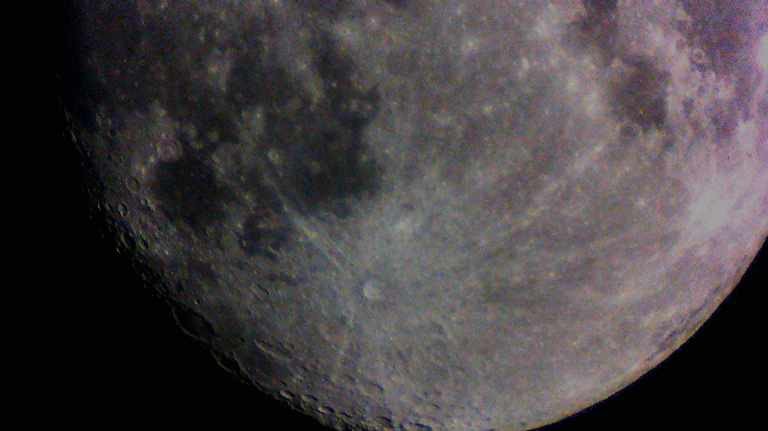
I bought my seven-year-old granddaughter a Celestron StarSense LT 70AZ telescope for Christmas and since then she and I have become more and more excited about our view of the night sky. We ordered a Svbony SV105 camera in March to capture some images of the night sky. Despite the fact that it was cloudy, the night after it arrived we still managed our first astrophotography of the Moon, captured untracked from the back garden.
We started processing with SharpCap, using its automatic exposure settings to record 100 frames as set by its Quick Capture menu. Then we imported the video into AutoStakkert! to split it into individual frames. Next we selected one of the good-quality frames and loaded it into RegiStax, where we made the craters stand out a little more by adjusting the image’s brightness and contrast with its default Wavelet filter.
It was thanks to your magazine and Martin Lewis’s article in the March 2023 issue (‘Processing: Bringing out the shadow profile of Plato’s east rim’, page 78), that we learned of the existence of AutoStakkert! and RegiStax. Although not of the clarity of some of the images in your magazine, we thought it might still be of interest to show what can be done by first-time astrophotographers on a limited budget.
Niamh Robertson (aged 7) and Roy Chisem (aged 66), Ulverston, Cumbria
Congratulations on your first image of the Moon, Niamh! Good luck to you and your grandfather on your astrophotography journey. – Ed.

The ‘Message of the Month’ writer will receive a bundle of two top titles courtesy of astronomy publisher Philip’s: Nigel Henbest’s Stargazing 2023 and Robin Scagell’s Guide to the Northern Constellations
Winner’s details will be passed on to Octopus Publishing to fulfil the prize
Flying high
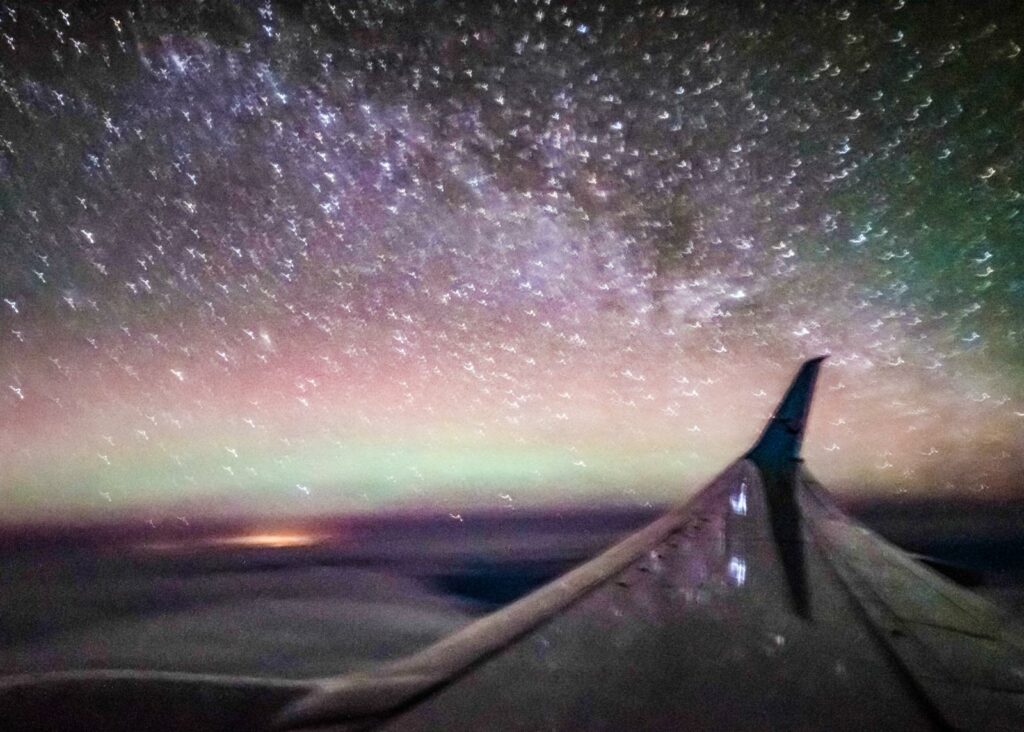
My wife and I were on a Northern Lights flight from Gatwick on 13 March which was hosted by Pete Lawrence. He gave a great pre-flight presentation and we loved his commentary during the flight. We got an amazing view of the night sky without light pollution from the blacked-out aircraft cabin. It wasn’t predicted to be a great night for viewing the aurora but, thanks to Pete’s pre-flight advice on camera settings and a bit of luck, I managed a half-decent hand-held image with my Nikon D750 DSLR camera. With a bit of post-processing to increase exposure and vibrance, my first Northern Lights experience has been captured. I think I’m hooked!
Knut Beekmann, Weston-in-Gordano, North Somerset
In at the deep end
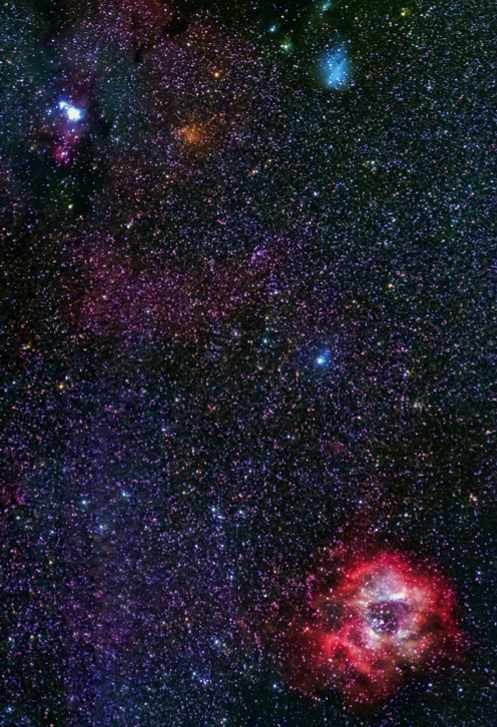
This is my first proper attempt at a deep-sky image, taken from Wembury Beach car park in South Devon in February with my Canon EOS 800D DSLR camera and Samyang 135mm f/2.0 lens on a Sky-Watcher Star Adventurer 2i mount. I know there is considerable work and learning still to do on both my data acquisition and processing skills.
I’m sure there are many faults with the image; it’s my first-ever attempt at blending two photos together using Starnet++ to remove stars in the image and Affinity Photo for stacking and image adjustments. But sometimes it’s helpful for beginners to see how other beginners are faring on their individual journeys; reassurance that others too are making and learning from the same mistakes.
I’ve never used stacking or photo-editing software, but your magazine keeps me motivated. Thank you for all your encouraging and informative articles in the magazine and online. Hopefully, this time next year I will be able to show far better progress. Astronomy, astrophotography and photo editing are such exciting and thrilling new learning journeys to be on!
Steve Parke, via email
Moore laughs
I was very pleased that your March edition included a commemorative article on Sir Patrick Moore. It was excellent in the way it presented his life and character, in particular his dedication to astronomy, his generosity and his sense of humour.
On the latter quality, I enjoyed being reminded of his brief (incognito) membership of the Flat Earth Society; it was indeed a joke, but one with a serious side. The International Flat Earth Research Society, to give it its full name, had as its motto “To observe, think freely, rediscover forgotten facts and oppose theoretical dogmatic assumptions”. Its British branch was run by an elderly craftsman sign-painter by the name of Sam Shenton, who lived in Dover. I met Mr Shenton on a few occasions and invited him to give a lecture to some students of mine in Canterbury. They listened politely, but I don’t think there were many converts.
Afterwards over tea, Sam told me, with evident pride, that he had recently been made a fellow of the Royal Astronomical Society. What he didn’t know was that it was Patrick who had proposed him for this honour. Of course, Patrick always enjoyed meeting a true eccentric, but he also recognised another upholder of those two virtues of the Enlightenment of which Patrick was an admirable champion: the determination to think for oneself and the ability to show toleration of the different opinions of others.
Hamish Halls, Liskeard, Cornwall
On the run
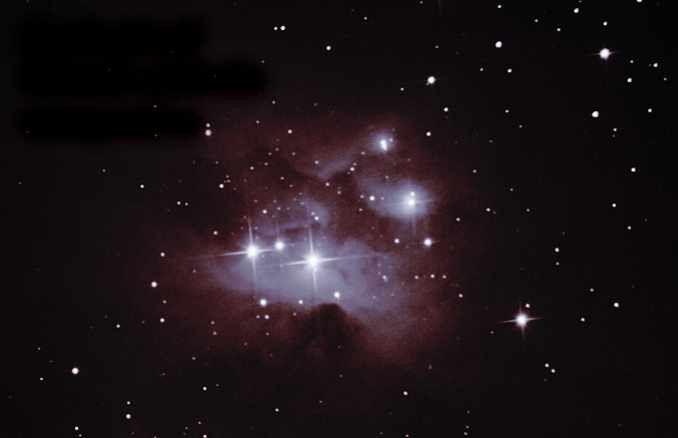
This is NGC 1977, the Running Man Nebula (above), usually seen as ‘an extra’ when imaging the Orion Nebula, or just cut off the image altogether. I have rarely seen it as a separate feature and thought this object deserved to have its own chance to be centre stage for a change. It is a beautiful subject, with the bright stars showing off the nebulosity around it, giving it a slightly blue hue and lighting up the Running Man. I used an unfiltered, modified Canon EOS 1100D DSLR camera on my 6-inch Sky-Watcher Explorer, mounted on an HEQ5 Pro mount, taking 39 exposures of 2 minutes each, together with 16 dark and bias frames. All this from the comfort of my back garden even with the light pollution that, sadly, goes with it!
Sue Silver, Sheffield
ON FACEBOOK
As we celebrated Patrick Moore’s 100th birthday, many of you got in touch to share your memories.
Peter Vines I met Patrick several times. He had a great sense of humour – unlike his serious TV persona. A great man who did much to further the cause of astronomy.
Heidi Cooper Wonderful man!
Chris Coyne My granddad loved the show and got me into it. I showed Patrick my granddad’s letters with hand-drawn pictures of space-related facts, which he thought were great and loved getting kids interested in astronomy.
Anthony James Bean Followed his programmes from when I was 7 years old. Now I’m 67 and that fascination is still with me. I’ve learned a lot and it’s all thanks to Patrick.
Richard Dorset Always replied to letters. But you had to remember what questions you’d asked, as his answers were short, eg 1. Yes. 2. Quite possibly. 3. No.
Chris Bailey Played in his garden in the ‘60s. My father used to visit him to discuss his Moon drawings. I remember he had dandelion and burdock fizzy drink, the only time I ever drank it.
Tweet
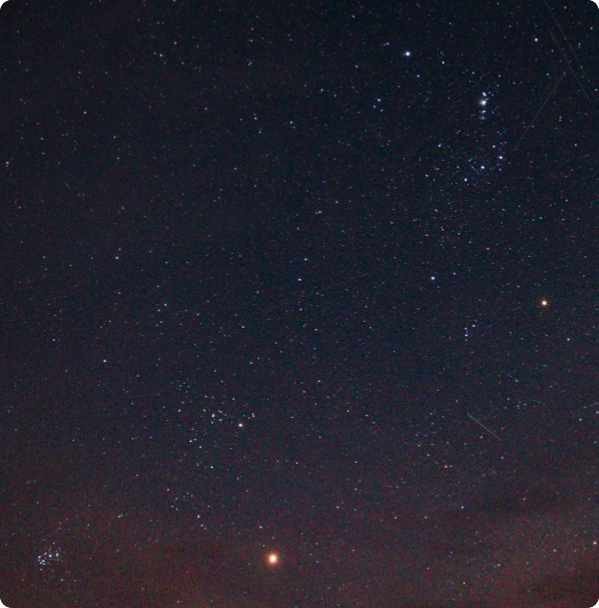
Anthony Grice @Spadge27544 • 13 March
Mars, Orion and the Pleiades from the Falklands skies @skyatnightmag
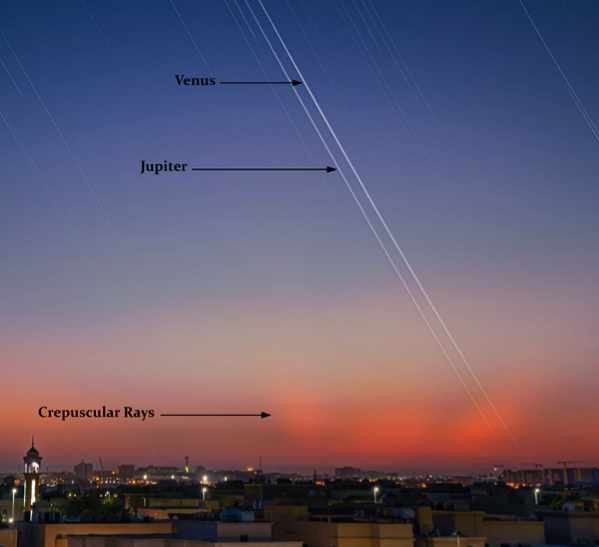
_amaar_amir • 5 March
Trails of Jupiter and Venus, featuring Uranus and crepuscular rays @bbcskyatnightmag @cosmograg @astrobiasky
SOCIETY IN FOCUS
Northern Ireland Amateur Astronomy Society (NIAAS) was founded in 1997 by two local enthusiasts. Known as East Antrim Astronomical Society until 2009, our group had humble beginnings. Meetings were held in a local primary school. After a few years of sitting on children’s chairs, it was decided to seek new premises and the society moved to its present location at the High School in Ballyclare, about 20km from Belfast.
The membership now is spread quite far and wide across Northern Ireland and our magazine Azimuth contains articles by members of the society.
Today NIAAS has around 50 regular members and holds meetings on the first Monday of each month from September to May. Many speakers are local, mainly from Queens University Belfast and Armagh Observatory, but occasionally from further afield.
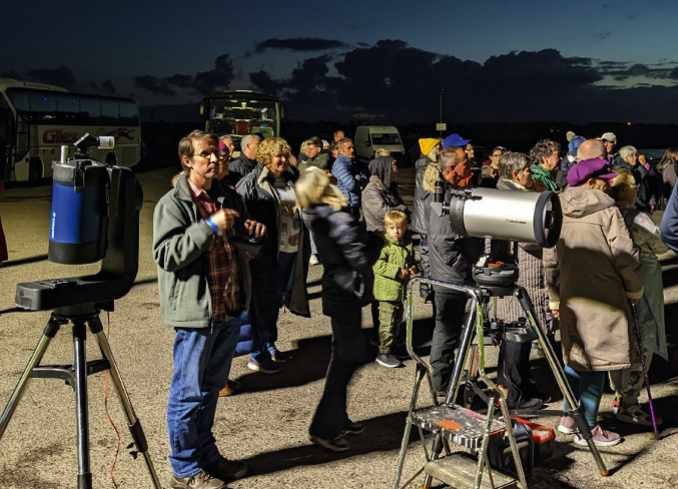
We’re an enthusiastic group with a wide range of equipment and have recently visited the dark-sky site at Davagh in County Tyrone. We have been known to travel much further in search of dark skies, usually to the west coast of Ireland where we regularly attend the annual Skellig Star Party at the International Dark Sky Reserve in County Kerry. Stevie Beasant, NIAAS Secretary
SCOPE DOCTOR
Our equipment specialist, Steve Richards, cures your optical ailments and technical maladies
Email your queries to scopedoctor@skyatnightmagazine.com
I want to upgrade my kit to create an imaging setup using my DSLR camera for the deep sky and also planets. Would I be better off getting a larger-aperture refractor or a smaller-aperture refractor with ED/apo-quality lenses?
FERGUS BROWN
Deep-sky and planetary imaging require very different instruments, so unfortunately there is no solution that suits both requirements well. A DSLR camera is much better suited to deep sky, so we’ll start there.
Astrophotography shows up any deficiencies in your optics, so concentrate on buying the best-quality optics you can afford. It would be better to buy a smaller apochromatic refractor, giving you a wider field of view and placing fewer demands on the weight and tracking ability of your mount. However, you should also factor in the cost of a field flattener, unless you buy a Petzval refractor.
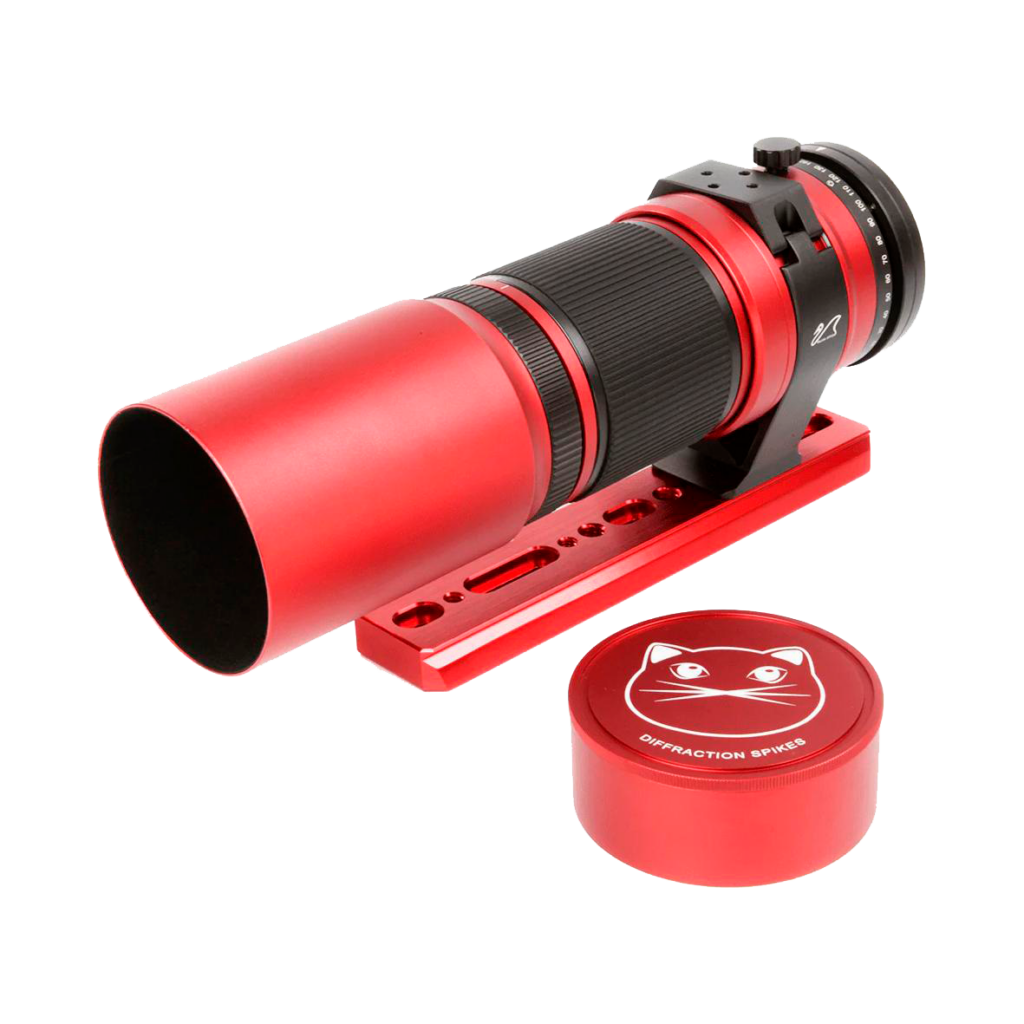
With astrophotography, aperture is of much less importance than it is for observing, and wonderful results can be achieved with apertures as small as 50mm. Have a look online for what can be achieved with refractors such as a William Optics RedCat 51, Sky-Watcher Evostar 80ED DS-Pro or a StellaMira 80mm ED for example.
Steve’s top tip
What are dovetail bars for?
Most telescopes are supplied with a profiled mounting bar attached either directly to the base of the telescope or to the scope’s tube rings. These bars have angled edges which, when viewed end-on, look like a ‘dovetail’. Most mounts are equipped with a special clamp for attaching the telescope using either a single bolt or a moving side-piece similar to a vice, and these have internal angled edges that match the profile of the dovetail bar. This simple arrangement makes for quick, secure attachment and removal of the telescope from the mount and allows adjustments to be made for balance.
Steve Richards is a keen astro imager and an astronomy equipment expert